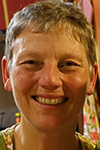A workflow to build a model investigating coal cleat upscaling conditioned by the lithotype
Karina Barbosa A , Joan Esterle A and Marc Ruest B AA The University of Queensland
B School of Civil Engineering
The APPEA Journal 56(1) 331-340 https://doi.org/10.1071/AJ15024
Published: 2016
Abstract
Cleats are natural macroscopic fractures in coalbeds. The distribution of cleats inside network patterns is an important attribute as it influences mechanical behaviour, effective permeability and gas production performance. Various publications on geological and geotechnical investigations show relationships between rank class, lithotype and cleat frequency, and it is well known that the block size of coalbeds affect coal strength. These attributes are commonly tested for and numerically modelled independently without regard for any natural sequence (e.g. dulling upward, brightening upward, randomly distributed) within the coalbed.
This paper presents a developing workflow with a methodology to set up a numerical modelling using the coal lithotype information as its basis. The contribution of each lithotype to the whole behaviour of the coalbed under transient stress conditions, and then to the larger rock mass, is considered a critical component. The main issues observed include:
reliable information exists for individual bright bands but not for mixed lithotypes;
neither a correlation between the individual bands and the lithotypes, nor between the lithotype and the coal seam, have been proposed;
derived geotechnical properties are not assumed to be conditioned by the individual lithotypes; and,
upscaling coal geotechnical properties from laboratory tests remains uncertain.
These matters, therefore, should be pursued to allow some quantification of the heterogeneous nature of coal and to capture the combined effects on coalbed strength. It is anticipated that the workflow still requires validation by running a set of numerical experiments for proposed scenarios.

Karina Barbosa has five years of industry experience performing various geotechnical roles with AngloGold Ashanti in Brazil and South Africa, and two years in the role of senior geotechnical engineer with Vale in Australia. She is a PhD student at The University of Queensland; her background includes a MSc in geotechnical engineering for mining and a BSc in mining engineering. Karina’s interests lie in rock mechanics and includes geological and geotechnical characterisation of strata, inference of rock response using numerical modelling, and related geotechnical risk appraisals for mine designs (underground and open pit), as well as the oil and gas industry (completion design, hydraulic fracturing, etc.). k.barbosa@uq.edu.au |

Joan Esterle joined UQ full time in 2010, taking up the chair of the Vale-UQ Coal Geoscience Program. The group has grown, with six senior researchers and some 20 under-and post-graduate students working across a range of projects in 2015. Joan’s main research questions focus on geological controls on the origins and distribution of gas in coal, gas and coal production, overburden geotechnical variability, and coal material properties. These applied research projects are underpinned by a fundamental understanding of peat and coal formation. Her projects are supported through the Australian Coal Association, the Centre for Coal Seam Gas, the Australian Low Emissions Coal fund, the Department of Natural Resources and Mines, and a suite of companies. Further information about Joan’s research is available on <www.uq.edu.au/energy/esterle>. Joan received her PhD from the University of Kentucky. j.esterle@uq.edu.au |

Marc Ruest has spent the majority of his career in the industry specialising in developing practical solutions for mining and civil engineering problems. His experience includes nearly eight years as Head of Geotechnical for the De Beers Group of companies, and nine years as a Geomechanics Consultant for Itasca. Marc holds the Chair of Rock Mechanics in the Geotechnical Engineering Centre at The University of Queensland. m.ruest@uq.edu.au |


